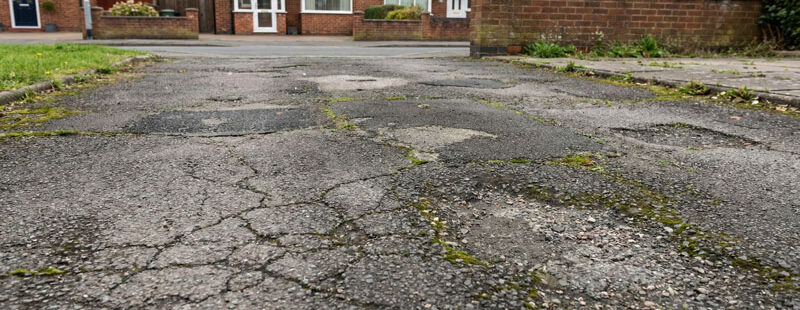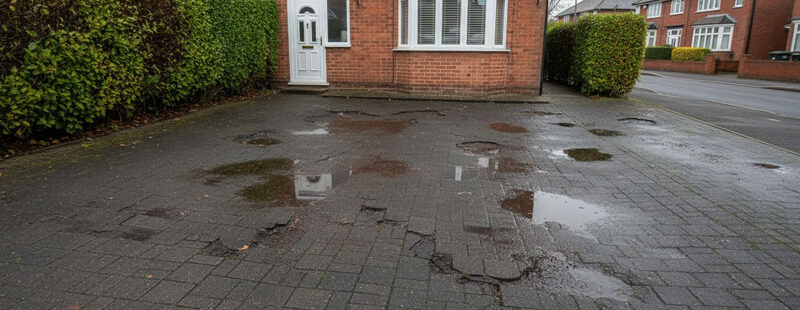
Understanding Surface Fatigue in Driveways
Surface fatigue in driveways is a progressive issue that affects both residential and commercial surfaces over time. It occurs when repeated stress, exposure to weather, and general wear start to degrade the driveway’s top layer. Whether your surface is made of asphalt or concrete, early detection of fatigue can prevent more serious issues like potholes, deep cracks, and structural failure.
Timely pothole repair and regular tarmac installation maintenance are essential to preserving the condition and appearance of your driveway. This guide will walk you through the common causes, early warning signs, and how to keep surface fatigue at bay.
What Causes Surface Fatigue in Driveways?
There are several key factors that contribute to surface fatigue in driveways, including:
-
Extreme weather conditions: Fluctuating temperatures, frost, heavy rain, and UV exposure all break down surface materials over time.
-
Frequent or heavy traffic: Constant vehicle use, especially by larger or heavier vehicles, accelerates deterioration.
-
Poor tarmac installation: An improperly prepared base or low-quality materials can lead to early surface fatigue.
-
Lack of maintenance: Skipping routine sealing, cleaning, or minor repairs leads to quicker damage progression.
Top Signs of Surface Fatigue
To prevent more extensive damage, be on the lookout for these early indicators of driveway surface fatigue:
1. Hairline Cracks
Small, web-like cracks often appear first. While they may seem minor, they’re a clear warning sign that the surface is weakening.
2. Potholes
Cracks that aren’t repaired can grow into potholes. These holes allow water to infiltrate the sub-base, worsening the damage quickly. Prompt pothole repair can prevent this chain reaction.
3. Raveling
This is when the surface material starts to crumble, causing a rough, gravelly texture. It’s a sign that the binder in the asphalt is failing, often due to oxidation or lack of sealing.
4. Discoloration and Fading
UV rays and chemical spills can fade the driveway’s colour. Beyond aesthetics, this fading indicates a loss of flexibility in the material, making it more prone to cracking.
5. Standing Water or Drainage Issues
Pooling water means your driveway isn’t draining properly. This accelerates surface fatigue and increases the risk of cracking, soft spots, and potholes.
Preventing Surface Fatigue: What You Can Do
Maintaining your driveway is far more cost-effective than replacing it. Here are some proven methods to prevent surface fatigue in driveways:
✅ Apply Sealant Regularly
A high-quality sealant every 2–3 years can protect the surface from moisture, UV rays, and chemical spills. Sealing is one of the best defences against early fatigue.
✅ Fix Potholes and Cracks Early
As soon as you notice signs of damage, schedule pothole repair or crack filling. Quick action limits water intrusion and prevents surface collapse.
✅ Ensure Proper Drainage
Work with professionals to install or adjust drainage systems if you notice water pooling. Good drainage extends the life of any tarmac installation.
✅ Limit Heavy Vehicle Use
Whenever possible, avoid parking heavy vehicles like vans or lorries on your driveway, especially in the same spot. This reduces stress and prevents premature surface wear.
✅ Choose Quality Tarmac Installation
Hiring experienced commercial tarmac contractors ensures that your surface has a strong base and durable finish. Proper installation is critical to preventing future fatigue.
Professional Help for Tarmac Driveways
If you’re noticing early signs of fatigue or potholes, it’s time to bring in the experts. At East Herts Surfacing, we offer full tarmac installation, resurfacing, and pothole repair services tailored to both domestic and commercial clients across Hertfordshire.
We don’t just repair — we help you protect your investment with ongoing maintenance and expert guidance.
Conclusion
Understanding and addressing surface fatigue in driveways is vital for preserving both safety and curb appeal. From hairline cracks to potholes, each sign is a warning that should not be ignored. With proactive maintenance — including sealcoating, drainage improvements, and timely pothole repairs — you can significantly extend the lifespan of your surface.
Whether you need expert advice, a full tarmac installation, or small repairs, taking action now will save you money and headaches down the road.
Want help extending the life of your driveway?
Contact East Herts Surfacing for a free consultation and expert solutions tailored to your needs.





